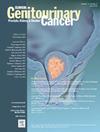上尿路癌根治性肾输尿管切除术后最佳膀胱镜监测方案。
IF 2.7
3区 医学
Q3 ONCOLOGY
引用次数: 0
摘要
背景:上尿路上皮癌(UTUC)的发病率越来越高,膀胱内复发(IVR)是根治性肾输尿管切除术后常见的术后挑战。虽然目前的指南推荐基于风险分层的膀胱镜监测,但这些建议是薄弱的,可能无法充分解决ivr特异性风险因素或最佳监测间隔。方法:我们回顾性分析了2012年至2021年间接受根治性肾输尿管切除术的700例患者。使用Cox比例风险回归模型确定IVR的危险因素,并通过假设的监测模型评估最佳膀胱镜检查间隔。计算间隙风险比以评估延迟IVR检测的风险,并根据存在或不存在确定的风险因素进行分层。结果:中位随访时间为28个月,38.0%的患者发生IVR。重要的危险因素包括膀胱癌病史、阴性细胞学检查阳性和术前输尿管镜检查。Kaplan-Meier曲线显示,有1个或更多危险因素的患者无ivr生存率显著降低(P < 0.001)。缺口风险比分析支持在术后第一年进行频繁监测,此后调整间隔时间。对于无危险因素的患者,第一年每3个月监测一次,第二年每6个月监测一次,此后每年监测一次为最佳。对于有危险因素的患者,建议第一年每3个月监测一次,之后2年每6个月监测一次,之后每年监测一次。结论:基于IVR危险因素的量身定制的膀胱镜监测计划优化了复发检测,同时减少了手术负担。这些发现为肾输尿管切除术后UTUC患者的个体化监测策略提供了一个基于证据的框架。本文章由计算机程序翻译,如有差异,请以英文原文为准。
Optimal Cystoscopic Surveillance Schedule Following Radical Nephroureterectomy for Upper Tract Urothelial Carcinoma
Background
Upper tract urothelial carcinoma (UTUC) has shown an increasing incidence, with intravesical recurrence (IVR) being a common postoperative challenge following radical nephroureterectomy. Although current guidelines recommend cystoscopic surveillance based on risk stratification, these recommendations are weak and may not adequately address IVR-specific risk factors or optimal surveillance intervals.
Methods
We retrospectively analyzed 700 patients who underwent radical nephroureterectomy between 2012 and 2021. Risk factors for IVR were identified using Cox proportional hazards regression models, and optimal cystoscopic intervals were evaluated through hypothetical surveillance models. Gap risk ratios were calculated to assess the risk of delayed IVR detection, stratified by the presence or absence of identified risk factors.
Results
The median follow-up duration was 28 months, and IVR occurred in 38.0% of patients. Significant risk factors included a history of bladder cancer, positive voided cytology, and preoperative ureteroscopy. Kaplan–Meier curves revealed significantly worse IVR-free survival in patients with 1 or more risk factors (P < .001). Gap risk ratio analysis supported frequent surveillance during the first postoperative year, with tailored intervals thereafter. For patients without risk factors, surveillance every 3 months during the first year, every 6 months during the second year, and annually thereafter was optimal. For patients with risk factors, surveillance every 3 months during the first year, every 6 months for the next 2 years, and annually thereafter was recommended.
Conclusion
Tailored cystoscopic surveillance schedules based on IVR risk factors optimize recurrence detection while minimizing procedural burden. These findings provide an evidence-based framework for individualized surveillance strategies in patients with UTUC following nephroureterectomy.
求助全文
通过发布文献求助,成功后即可免费获取论文全文。
去求助
来源期刊

Clinical genitourinary cancer
医学-泌尿学与肾脏学
CiteScore
5.20
自引率
6.20%
发文量
201
审稿时长
54 days
期刊介绍:
Clinical Genitourinary Cancer is a peer-reviewed journal that publishes original articles describing various aspects of clinical and translational research in genitourinary cancers. Clinical Genitourinary Cancer is devoted to articles on detection, diagnosis, prevention, and treatment of genitourinary cancers. The main emphasis is on recent scientific developments in all areas related to genitourinary malignancies. Specific areas of interest include clinical research and mechanistic approaches; drug sensitivity and resistance; gene and antisense therapy; pathology, markers, and prognostic indicators; chemoprevention strategies; multimodality therapy; and integration of various approaches.
 求助内容:
求助内容: 应助结果提醒方式:
应助结果提醒方式:


